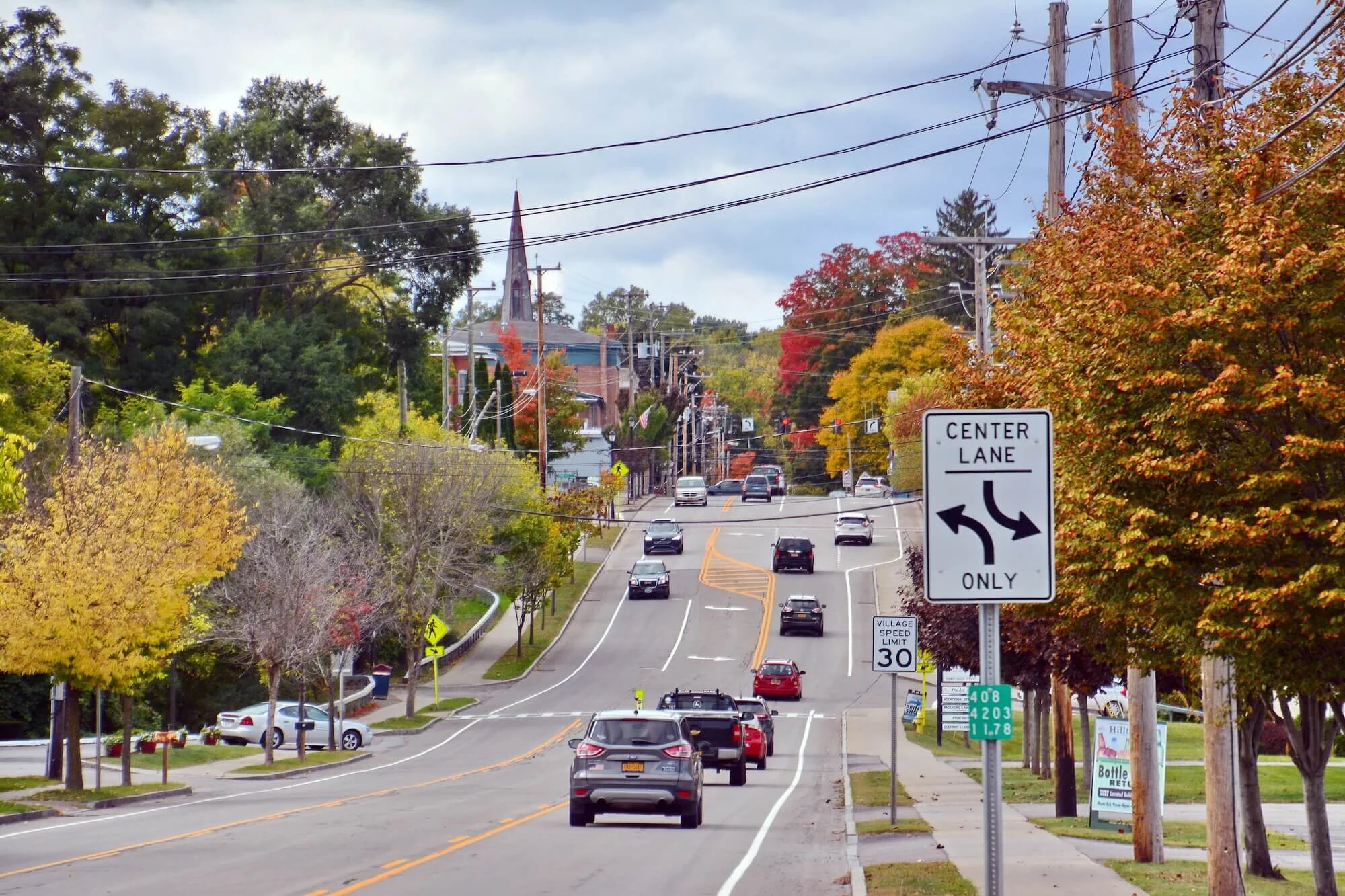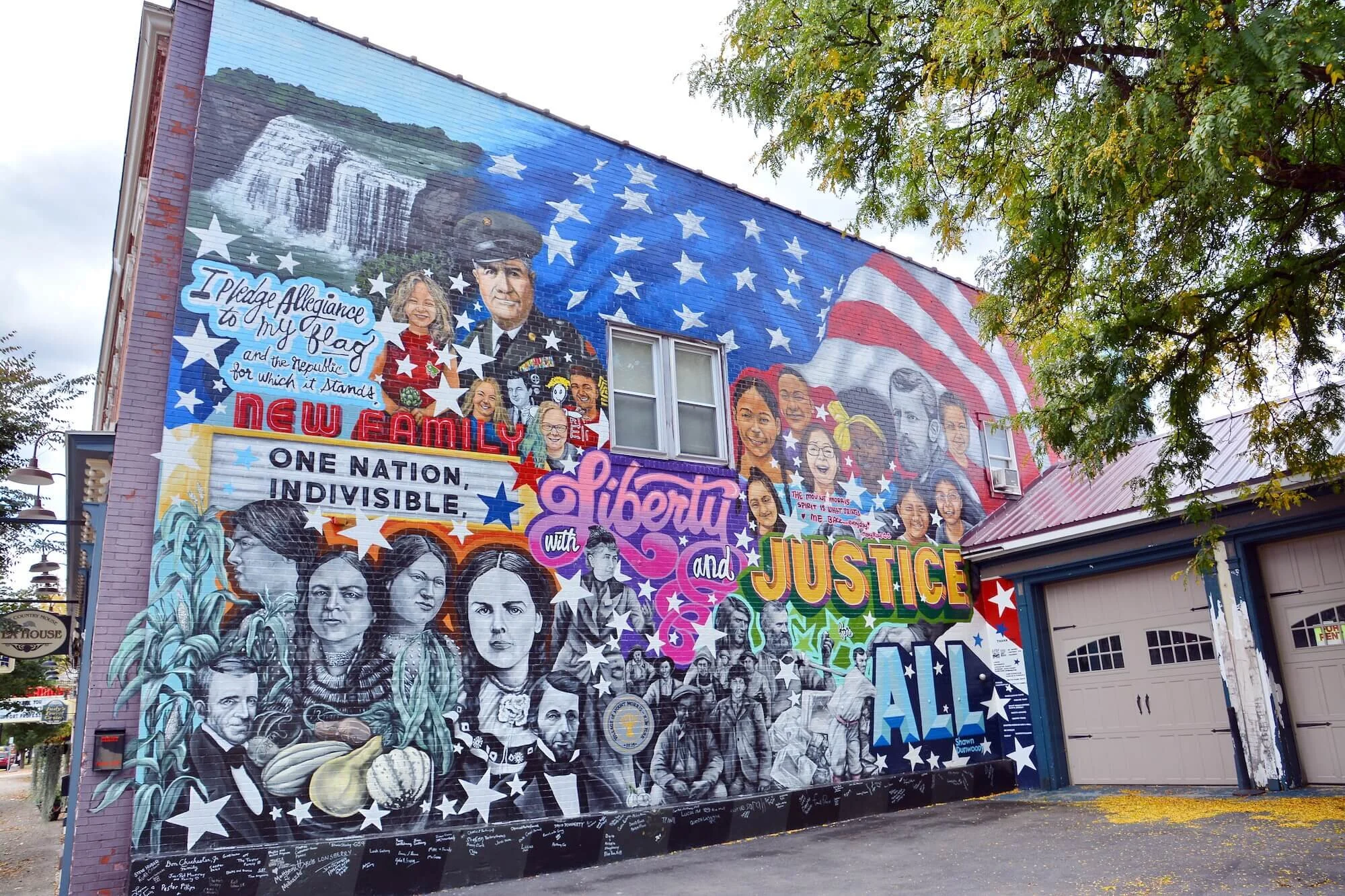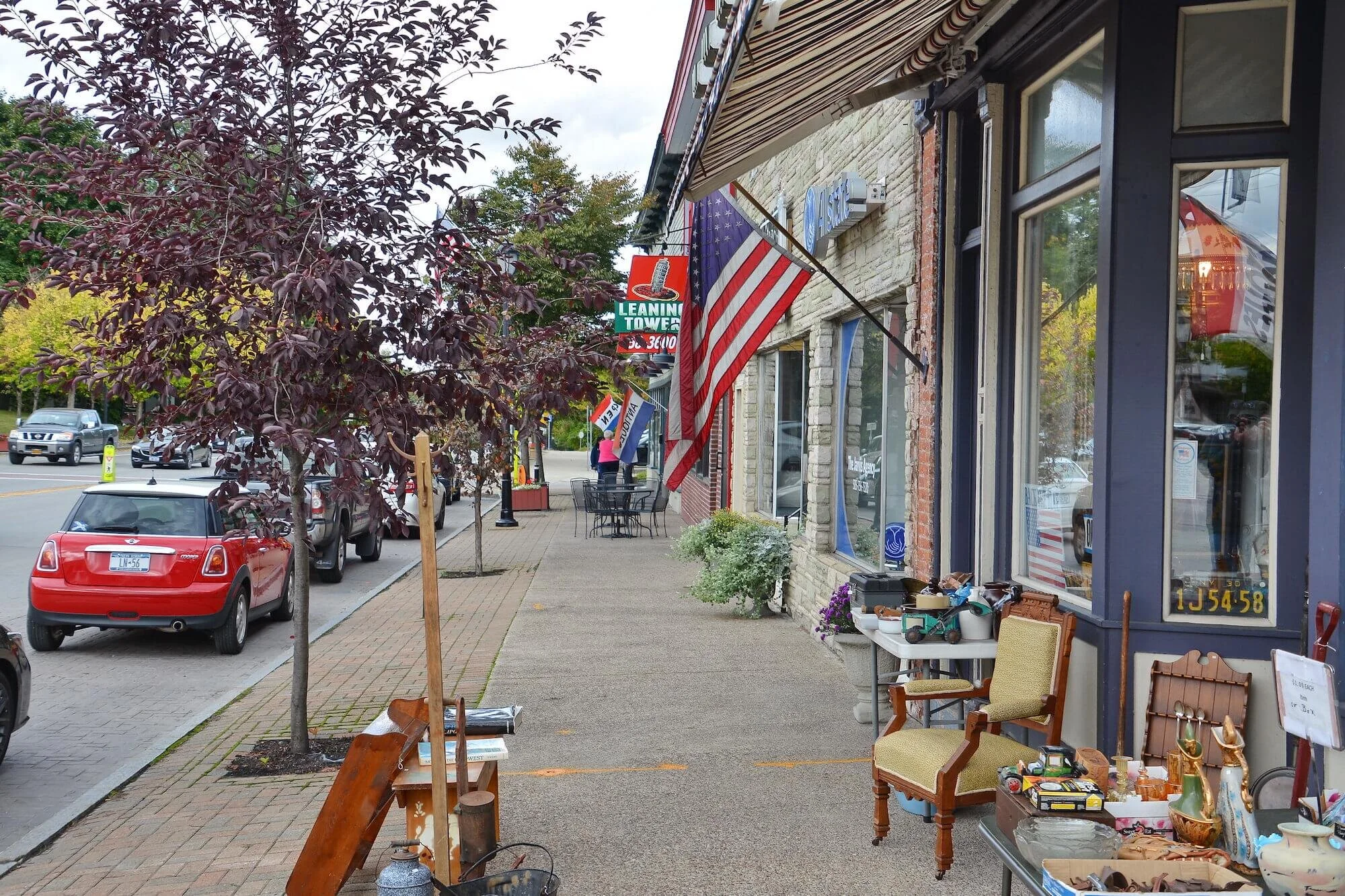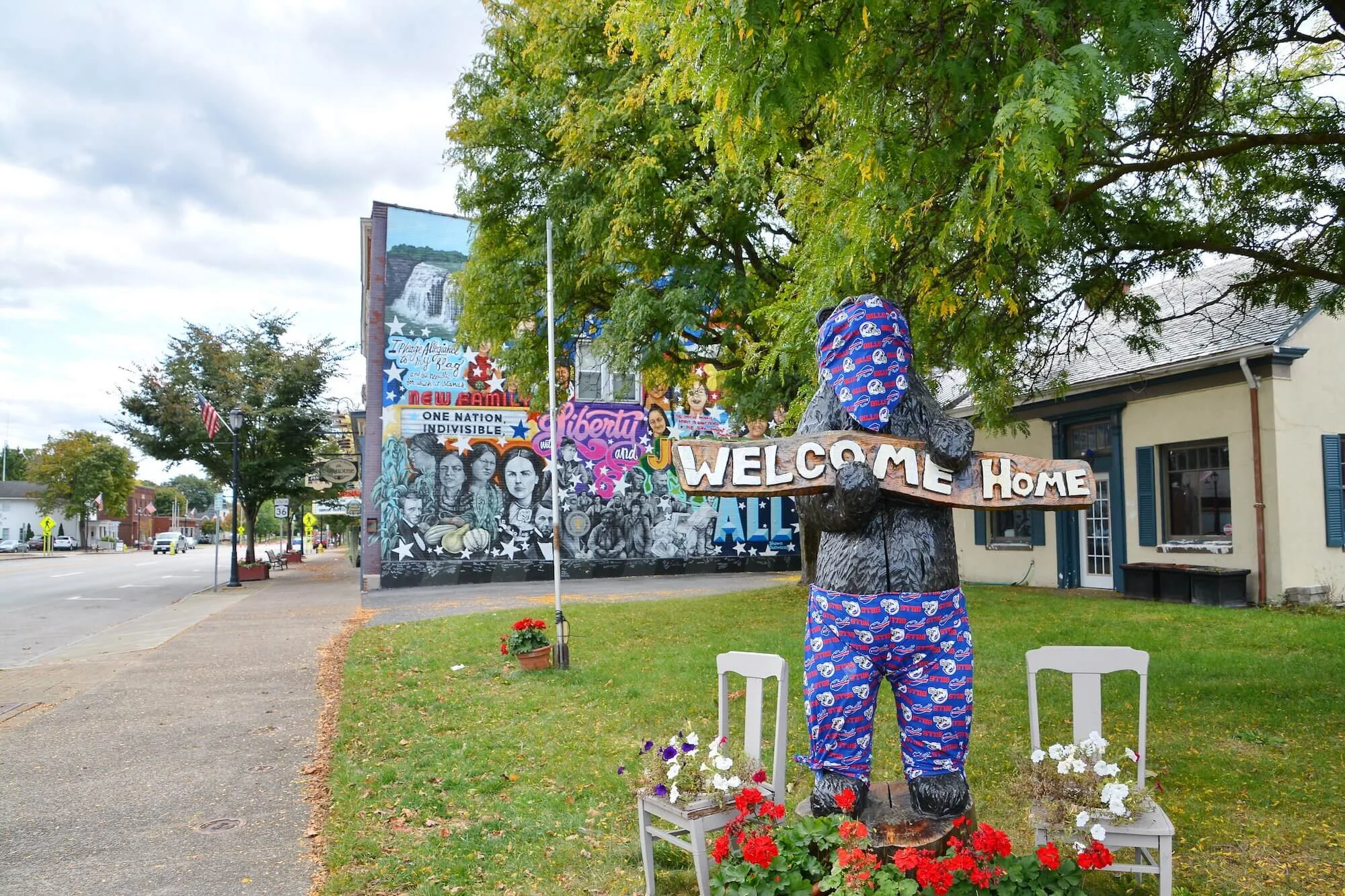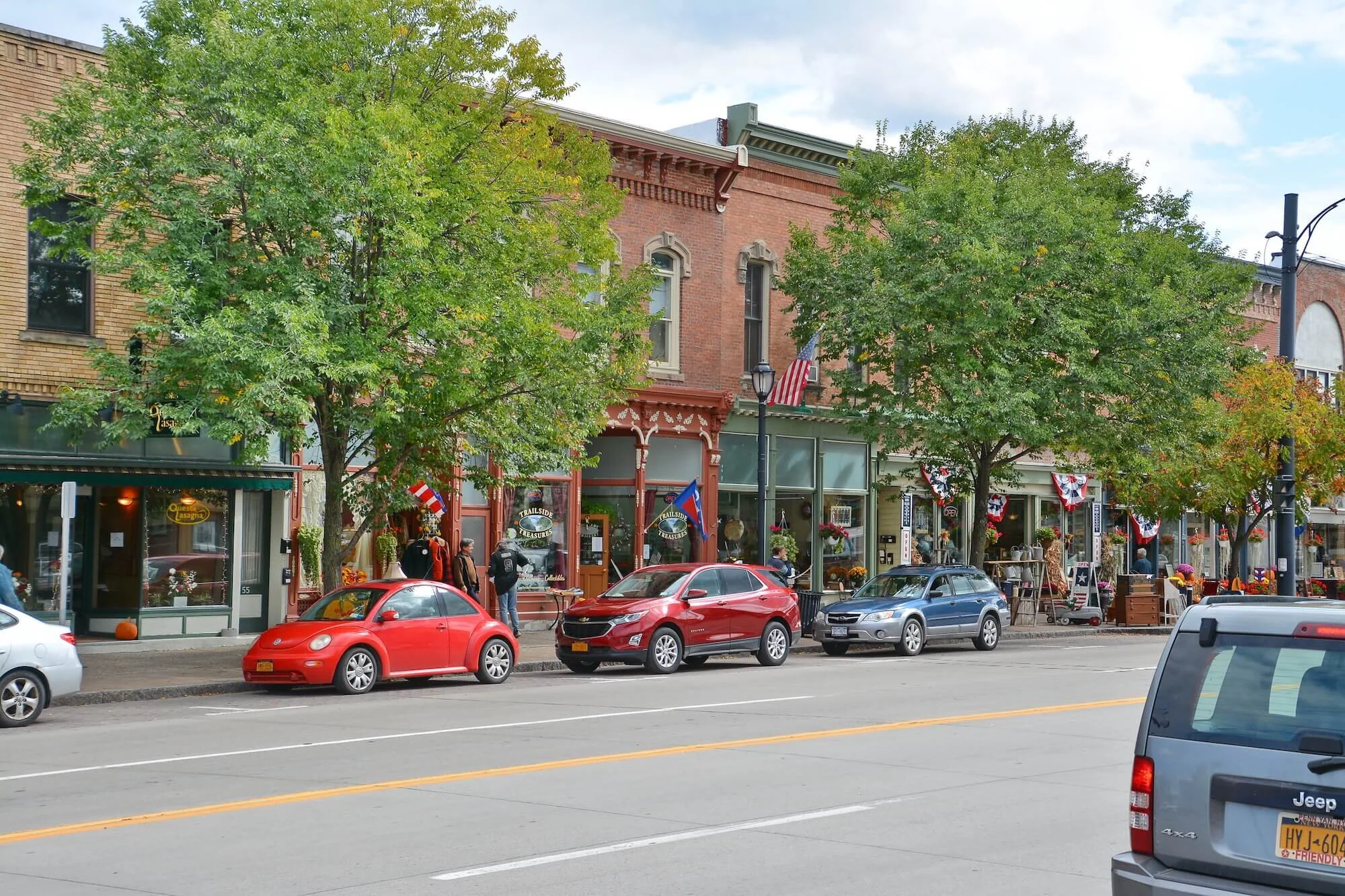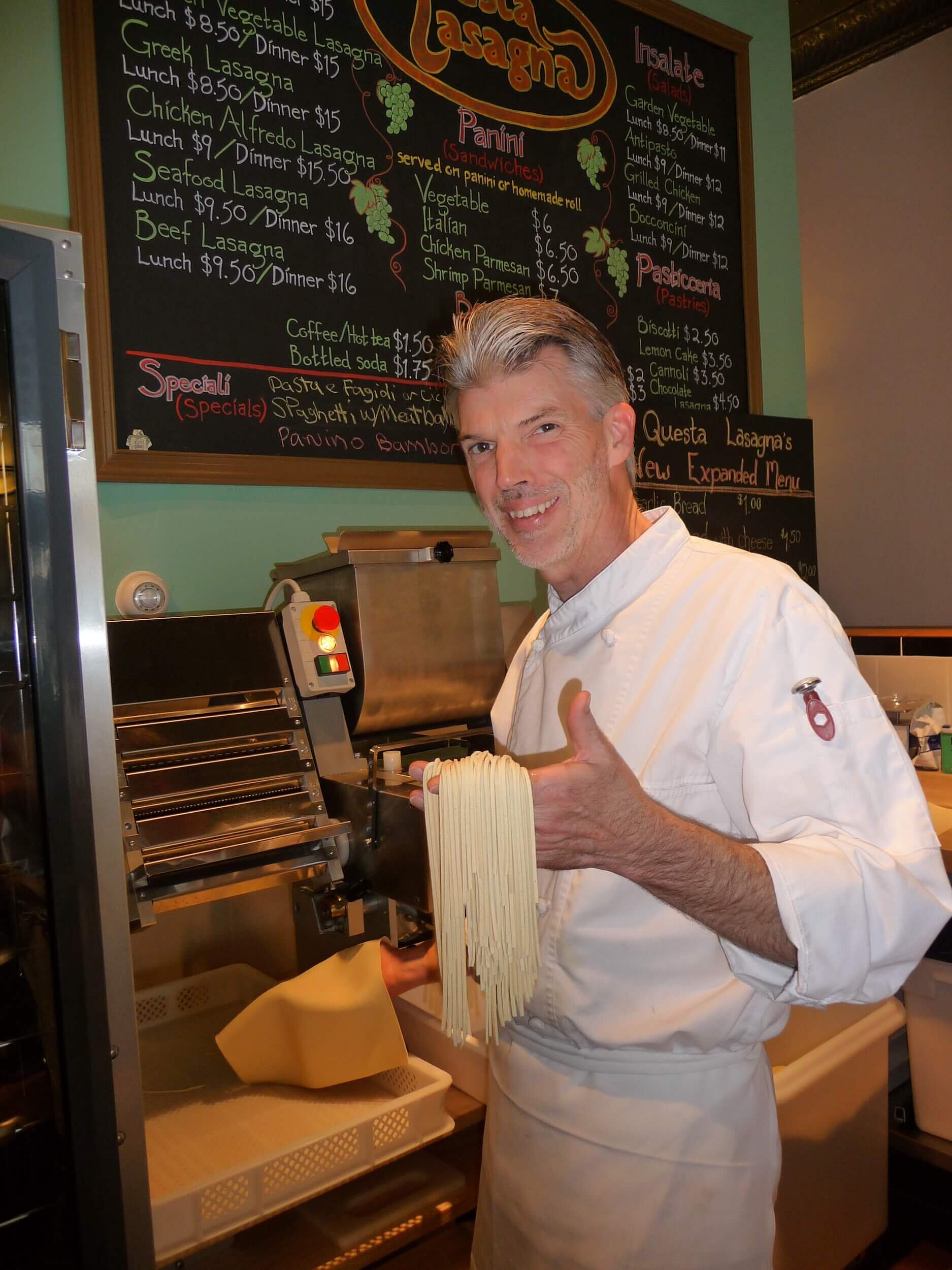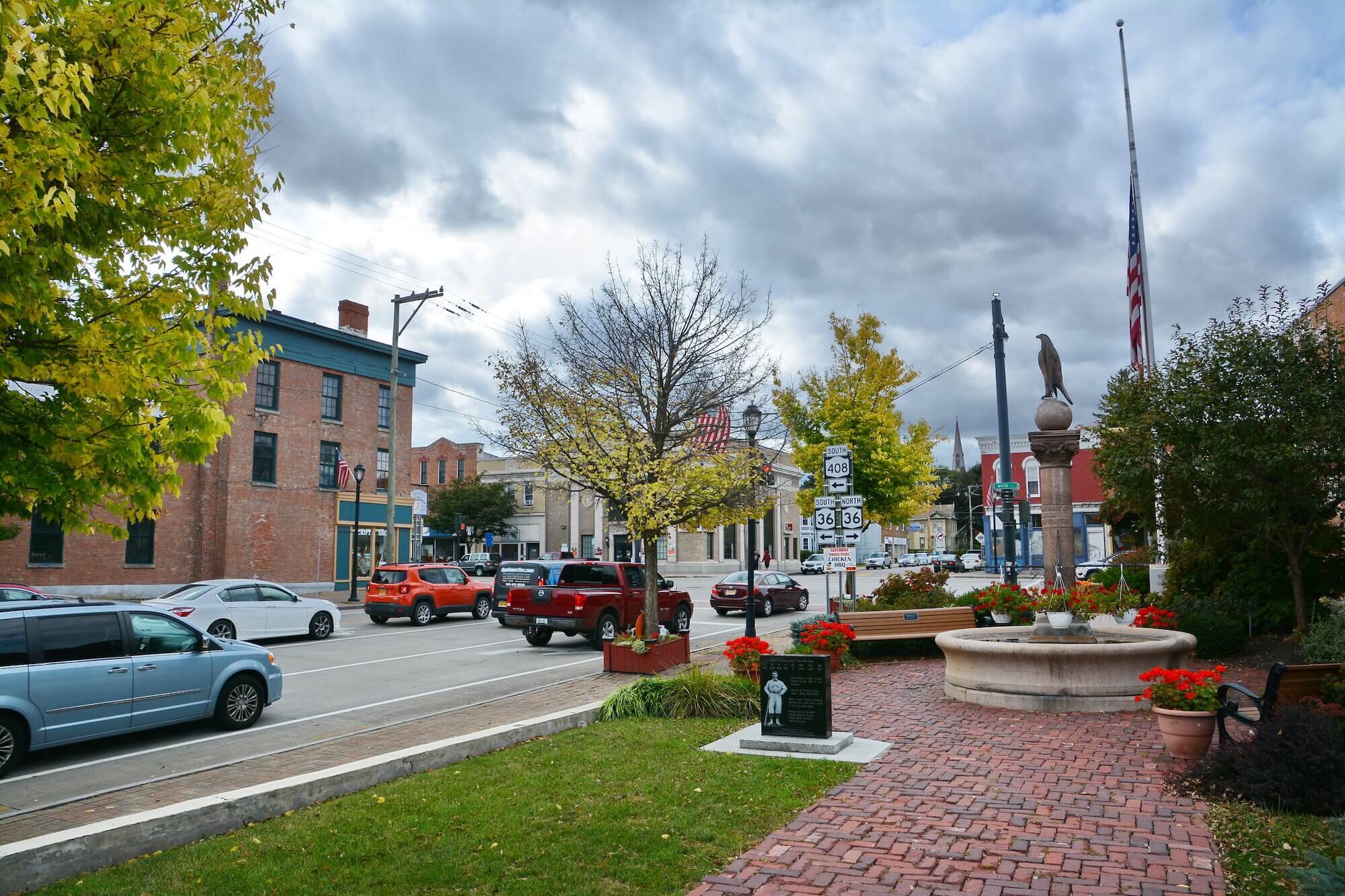Revitalizing Rural Mount Morris
Rural communities in New York State face significant economic challenges. Factors such as a high tax culture, decreasing population, continuing increases in costs of goods, and a burdensome regulatory climate can prove to be a difficult test for even the most resilient of industries and individuals. However, there are opportunities to change the way public officials, business owners, and local residents look at the future of their communities. Navigating these dangerous waters is best done by using processes of planning, such as human capital as it relates to the declining population and attracting new locals to the area, innovation specifically as it relates to the ag-based economy, and performing traditional tasks in a new way, and developing retail attraction processes to carry in new businesses.
The decline of Main Streets has been a national trend, but New York State is in a paradoxically fortunate position to restore those historic centers of community life. Rural New York has had the happy combination of affordable costs of living and beautiful countryside. Our quality of life is exceptional, giving us the potential to attract new investment by capitalizing on the benefits of living in a small town. As visitors to the region admire the rolling hills and broad valleys, the lakes and rivers, the historic sites and cultural treasures, they also pass by the once-neglected brickwork and cloudy storefronts of our Main Streets. Instead of disrepair, our visitors see development. They have the chance to explore aesthetically pleasing central business districts with increasing property values on homes as well as commercial buildings that attract new residents and businesses.
This transformation of our rural downtowns happened in Mount Morris not twenty years ago. The Village of Mount Morris, centrally located in Livingston County, was once a thriving downtown. In 2006, a three-year Department of Transportation (DOT) project encompassing Main Street was completed. By that time over fifty percent of the storefronts were vacant and the downtown was essentially in a derelict state. The community was disheartened and discouraged. Businesses did not want to locate there and the perception of Mount Morris was that it was scary, almost a ghost town. There was no reason to stop on Main Street and no one did.
The Village of Mount Morris presents a prime example of what downtown revitalization efforts can achieve. Creative programming combined with private sector investment led to a stunning renaissance of the Village’s historic downtown. The County used innovative capital financing programs to bring previously vacant storefronts and upper floors to life. Facade investments, creative lease structures, pop-up art displays, student involvement, and community volunteers were all catalysts for community growth and enhanced economic activity. The Mount Morris experience, which was featured in the New York Times, has been studied both locally and nationally as a model for how small-town downtowns can be restored and revitalized while retaining their historic character and cultural identity.
In 2008, Greg O’Connell, a community-oriented Brooklyn developer, purchased a derelict building at a County auction. When he reviewed an inventory of downtown buildings he found that many buildings could be purchased at very low prices. No one believed that this downtown could be turned around, including the owners of the buildings. Many of the buildings O’Connell purchased were behind on taxes or had been foreclosed. Many of the apartments were substandard. Maintenance on all of the buildings was virtually nonexistent.
Mount Morris was the first Livingston County community to receive a New York Main Street Grant Award. $400,000 in grant funding leveraged over 1.5 million in private investment and created 15 new businesses and 30 new jobs in the downtown district. With this funding, 12 buildings were renovated and 17 residential units rehabilitated which transformed the village and gave it a renewed economic life. Today, Mount Morris has a thriving business district and more renovations have taken place recently as a result of a second New York Main Street Grant and the Livingston County Sign and Façade Improvement Grant Program.
All aspects of the community have had a part in the revitalization of downtown Mount Morris. The community high school shop students built planters around the trees. Other students raised and planted the flowers and made banners for the streetlights. The metal shop students built the brackets for hanging baskets and a kiosk for event information. SUNY Geneseo college students developed Promotional Campaigns for the village and the individual businesses and began performing plays, and musical events in a space on Main Street. Business owners found ways to work together to promote cooperatively through TV, Internet, and print ads.
The small business development efforts continued to unfold for Mount Morris and offer new avenues to revitalization. Design Guidelines were developed for use in conjunction with grant funding. These guidelines addressed storefront design, signage, lighting, and window displays. They ensured that these elements would be modified to be pedestrian-friendly and create attractive spaces suitable for business. The Village of Mount Morris was awarded a Microenterprise Grant from the Office of Housing and Community Renewal, which multiple new businesses used to open their doors. Niche businesses were targeted for new storefronts. Antique stores, specialty retail including arts-based businesses, and specialty restaurants have been recruited.
Greg O’Connell was able to offer inexpensive rents as an incentive for start-up businesses. Local banks and our office were able to offer loan funds and a Main Street Coordinator position was developed with the use of SUNY Geneseo interns under the supervision of the Livingston County Downtown Coordinator. This position helped coordinate the businesses to market the village. Business Guidelines were developed to encourage businesses to change window displays seasonally and to keep display lights on at night. This greatly improved the impression of the village as a friendly place that is open for business. Finally, all businesses were asked to maintain consistent and convenient store hours (seven days a week) and to stay open late on Thursday nights.
The value of money and tax abatement cannot be underrated in Mount Morris’ redevelopment. Comprehensive targeted real property tax abatement programs have been an extremely effective tool for attracting investment to derelict or declining neighborhoods for many years. The current status of tax incentives available in rural New York through Real Property Tax (RPL) assisted in Mount Morris greatly. For example, targeted tax abatement removed the financial disincentive to revitalize buildings. By limiting eligibility to structures within locally defined downtown redevelopment areas, each revitalized building has a stimulating impact on adjacent properties motivating other owners to renovate and revitalize. As has been seen in Mount Morris, the pace, participation, and extent of renovations dramatically increased in a relatively short period.
In summary, targeted downtown tax abatements stimulate new investment in depressed villages. The taxing entities are not lowering taxes but stabilizing them for a set time so that the building owner can invest in his property without fear of higher taxes. These incentives also give new businesses the chance to “incubate” on Main Street which in turn enables Main Street to prosper. Our rural downtowns are a key asset and an opportunity for New York State to attract new investment and grow small businesses. The New York Main Street Grant program, an initiative of the New York State Office of Housing and Community Renewal, has been highly successful at starting the process, but more needs to be done. With several articles in the NY Times recently, the Mt Morris renaissance has garnered attention from all over the United States and Canada. The Village of Mount Morris is an example of what can happen when a new investment is made downtown. Currently, 16 new businesses have opened representing over 30 new jobs downtown. 12 historic buildings have been restored and brought up to code, and 16 apartments have been renovated. Best of all, people are shopping on Main Street and the community is proud of their downtown.

